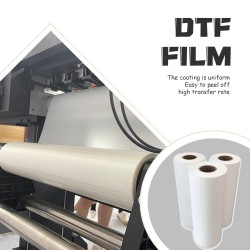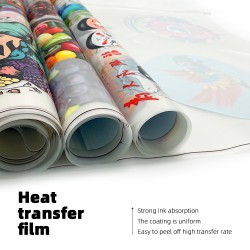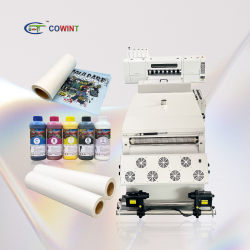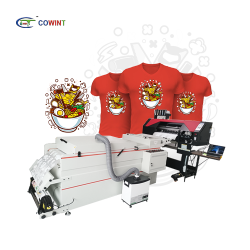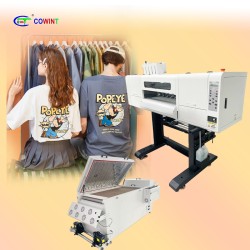A few days ago, the research team of Dai Zhuojun and Liu Zhiyuan's research group of Shenzhen Institute of Advanced Technology, Chinese Academy of Sciences proposed a new construction idea for rapidly repairable living materials in the field of living functional materials, and further transformed this idea into a kind of living material. The universal living material combination method will be promoted to new application fields such as intelligent manufacturing and assembly of wearable devices. This achievement is a new attempt by the research team to integrate biotechnology (BT) and information technology (IT) in the field of synthetic biology. Relevant research results were published in Nature Chemical biology.
Self-healing materials are not a concept that has been introduced in recent years. A clothing brand in the United States has previously launched clothing materials that can be repaired automatically. The principle is very simple. It is only by increasing the strength of the thread, so that the thread cannot be cut after the iron nail is inserted, but only the thread is pulled apart. However, such a material has great limitations, and its repair function can no longer work in the face of splits such as sharps.
Since then, scientists have turned their attention to coating materials for textiles. The squid's ring-dentin (SRT) protein has "self-healing" properties. Drop a few drops of warm water on the SRT protein-coated textile, and then overlap the sections and press for about 60 seconds, and the sections will reconnect.
However, there is still a big gap between such self-healing materials and the self-healing materials we imagine. In short, such repairing methods cannot make the fracture surface bridged by self-healing. On the other hand, the purified protein materials are no longer Has the property of being programmable in living cells.
living biological material
Achieve powerful self-healing capabilities
The rapid development of synthetic biology has made it possible to realize the self-healing process using intelligent biological living materials. Traditional living materials propose to rely on the growth and reproduction of microorganisms to achieve self-repair. This process often takes tens of hours or even days. Such a long repair time greatly limits its application scenarios. In this regard, the research team took a different approach from the repair principle and found a method that can greatly shorten the repair time of the material.
Antigen and antibody molecules have a certain complementarity in structure (relying on intermolecular forces to form non-covalent binding), so that they can be stably combined by specific interaction in a very short period of time. This binding force can be quickly restored after being damaged by external force, that is, rapid repair can be achieved. Based on this principle, the team constructed two engineered strains with antigens and nanobodies displayed on their surfaces, respectively. After that, the two strains were mixed in a certain proportion, and through the rapid interaction between antigens and antibodies, a stable LAMBA precursor material with high self-healing ability.
Since the properties of LAMBA precursor materials are similar to hydrogels, LAMBA materials can be freely processed into materials with different shapes and properties by combining traditional material processing techniques (such as 3D printing, microfluidics, etc.).
'Programmable' living materials
Make devices smarter
Qualified self-healing materials should also be intelligent. One of the biggest advantages of living biological materials lies in the powerful programmability of microorganisms. Therefore, the research team also explored this from two aspects.
On the one hand, by displaying enzymes and nanocatalysts on the surface of two engineered bacteria, and then making them into LAMBA materials, paraoxon, the main component of pesticides, was finally successfully degraded into low-toxic p-aminophenol.
On the other hand, starch hydrolase is displayed on the surface of one bacteria and trehalose synthase is expressed intracellularly in another bacteria, so that starch is first converted to maltose by the starch hydrolase, and then maltose is transported as a substrate to another The engineered bacteria were intracellularly converted to trehalose by trehalose synthase.
The super self-healing ability and intelligent programming ability of LAMBA materials inspired the research team to further explore its application in wearable devices and biosensors.
Wearable devices can detect the basic physiological signals of the human body to achieve daily health detection, auxiliary rehabilitation treatment and other effects. Good tensile properties and electrical conductivity are the prerequisites for their normal operation. After testing, the electrical conductivity of the LAMBA material can remain stable even after repeated cyclic stretching. And after being damaged, the LAMBA material can be quickly repaired to its original performance in a short period of time.
The neuromuscular activity of the human body is accompanied by the generation of electrophysiological signals, and electrophysiological sensors can be used to capture neuromuscular electrophysiological signals of different frequencies. The accurate acquisition of muscle electrical signals can be used to evaluate the health status of muscles on the one hand, and to calculate and evaluate the instantaneous action intention of the human body, and then to control external devices, such as prosthetics and exoskeletons. The experimental results show that the flexible LAMBA electrophysiological sensor can accurately capture the electrical signal of the muscle, and shows a better signal-to-noise ratio than the single bacteria or gold thin film sensor prepared by the same method.
On the other hand, as a flexible material, LAMBA also has significant advantages in the fabrication of strain sensors. Compared with sensors made of gold films, flexible LAMBA strain sensors can more uniformly respond to the degree of deformation.
BT and IT in synthetic biology
"Collision" gives infinite possibilities
In general, the research team has invented a living material with rapid self-healing ability. The excellent performance of this material makes it have great application prospects in many fields. IT technology and BT technology are two major technologies that affect the future development of human beings. The scientific and industrial circles have been calling for the integration and cross-research of the two fields. In the future, this innovative "BT+IT" collaborative manufacturing model will surely bring about a major technological innovation.
"We hope to establish a new method for the assembly of living materials through this research. On the basis of living bioprogrammability, by introducing theories in polymer physics and chemical synthesis, we can endow microorganisms with new characteristics, so that the assembled materials have rapid self-healing properties. We are also promoting other related interesting researches, expecting and believing that synthetic biology can bring infinite possibilities.” said corresponding author Zhuojun Dai.
Fan Chunhai, an academician of the Chinese Academy of Sciences and a professor at Shanghai Jiaotong University, said that this work has taken a big step in the design and editing of living materials. In particular, the innovative design idea of rapid self-healing mediated by dynamic non-covalent bonds in polymer physics and chemistry is used to arm bacteria, and the classical systems accumulated in polymer science are introduced into synthetic biology across disciplines. This also suggests that we can learn and draw on other excellent systems of materials science in the future design of living materials.
Zhao Guoping, academician of the Chinese Academy of Sciences and chief scientist of the Institute of Synthetic Biology, Shenzhen Institutes of Advanced Technology, Chinese Academy of Sciences, said that the achievement focuses on the field of living functional materials, challenging the problem of self-healing within minutes of living materials, which cannot be achieved by cell division alone. The inspiration for solving this problem comes from the theory of dynamic non-covalent bond formation and rapid self-healing. Using the properties of bacterial surface-mountable antigen-antibody, a functional material that can be quickly assembled and self-healing has been developed, realizing a new programmable material patterns. It is particularly worth mentioning that this work further assembles living materials with a variety of wearable devices, such as muscle electrical signal sensors and strain sensors, breaking the boundaries between living and non-living devices and expanding the construction framework of living materials. and application areas, this is an example of the "convergence" of research on the intersection of chemical biology and biotechnology with materials science and engineering science.
 +8615820889696
+8615820889696 Info@cowint.com
Info@cowint.com



